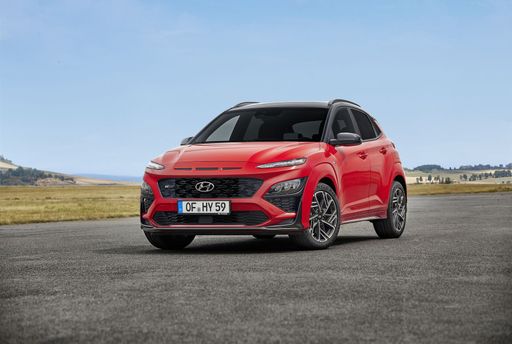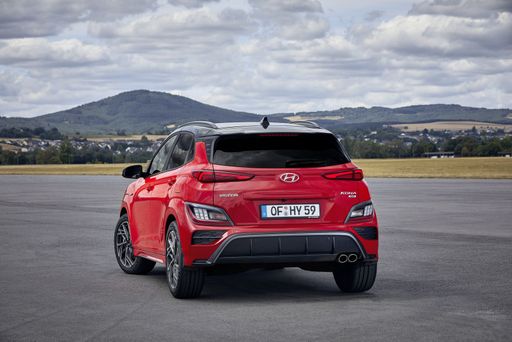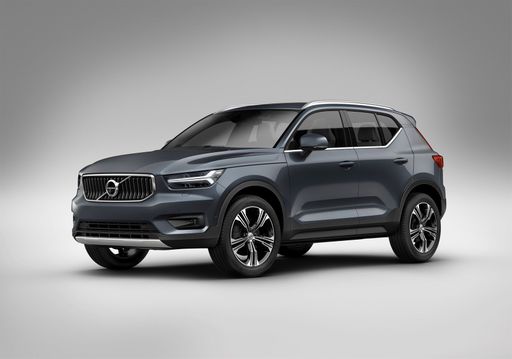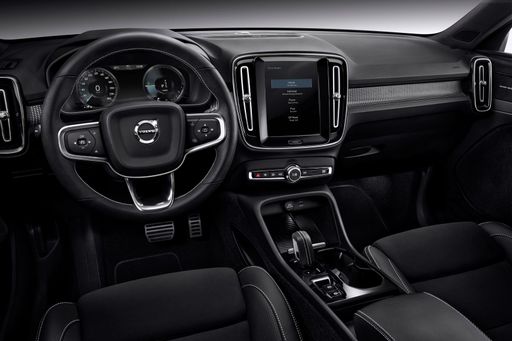Hyundai Kona vs Volvo XC40 – Which car suits you better?
Both models have their strengths – but which one suits you more?
Compare performance, efficiency, price and space directly: Hyundai Kona or Volvo XC40?
Costs and Efficiency:
When it comes to price and running costs, the biggest differences usually appear. This is often where you see which car fits your budget better in the long run.
Hyundai Kona has a significantly advantage in terms of price – it starts at 23100 £, while the Volvo XC40 costs 36800 £. That’s a price difference of around 13705 £.
Fuel consumption also shows a difference: Hyundai Kona manages with 4.60 L and is therefore significantly more efficient than the Volvo XC40 with 6.50 L. The difference is about 1.90 L per 100 km.
Engine and Performance:
Under the bonnet, it becomes clear which model is tuned for sportiness and which one takes the lead when you hit the accelerator.
When it comes to engine power, the Hyundai Kona has a minimal edge – offering 218 HP compared to 197 HP. That’s roughly 21 HP more horsepower.
In acceleration from 0 to 100 km/h, the Volvo XC40 is barely noticeable quicker – completing the sprint in 7.60 s, while the Hyundai Kona takes 7.80 s. That’s about 0.20 s faster.
In terms of top speed, the Hyundai Kona performs to a small extent better – reaching 210 km/h, while the Volvo XC40 tops out at 180 km/h. The difference is around 30 km/h.
There’s also a difference in torque: Volvo XC40 pulls to a small extent stronger with 300 Nm compared to 265 Nm. That’s about 35 Nm difference.
Space and Everyday Use:
Whether family car or daily driver – which one offers more room, flexibility and comfort?
Both vehicles offer seating for 5 people.
In curb weight, Hyundai Kona is evident lighter – 1370 kg compared to 1688 kg. The difference is around 318 kg.
In terms of boot space, the Hyundai Kona offers hardly perceptible more room – 466 L compared to 452 L. That’s a difference of about 14 L.
In maximum load capacity, the Volvo XC40 performs slight better – up to 1328 L, which is about 28 L more than the Hyundai Kona.
When it comes to payload, Volvo XC40 minimal takes the win – 532 kg compared to 490 kg. That’s a difference of about 42 kg.
Who comes out on top?
Overall, the Hyundai Kona shows itself to be outperforms in nearly all aspects and secures the title of DriveDuel Champion.
It convinces with the more balanced overall package and proves to be the more versatile choice for everyday use.
 @ Hyundai Motor Company
@ Hyundai Motor Company
Hyundai Kona
Hyundai Kona
The Hyundai Kona wears its personality on the outside with bold styling and sprightly handling that turns city driving into something a little more fun than a commute. It blends practical space, modern tech and sensible running costs into a compact, stylish package — a smart pick if you want flair without paying luxury prices.
details @ Hyundai Motor Company
@ Hyundai Motor Company
 @ Hyundai Motor Company
@ Hyundai Motor Company
 @ Hyundai Motor Company
@ Hyundai Motor Company
 @ Hyundai Motor Company
@ Hyundai Motor Company
Volvo XC40
The Volvo XC40 wraps Scandinavian minimalism into a compact, city-ready SUV with a premium cabin that feels both practical and grown-up. It will suit buyers who prize safety, clever storage and a composed ride, proving that small dimensions don't mean small personality.
details @ Volvo Cars
@ Volvo Cars
 @ Volvo Cars
@ Volvo Cars
 @ Volvo Cars
@ Volvo Cars
 @ Volvo Cars
@ Volvo Cars
 @ Volvo Cars
@ Volvo Cars
 @ Hyundai Motor Company
@ Hyundai Motor Company
|
 @ Volvo Cars
@ Volvo Cars
|
|
|
|
Costs and Consumption |
|
|---|---|
|
Price
23100 - 41600 £
|
Price
36800 - 47200 £
|
|
Consumption L/100km
4.6 - 7 L
|
Consumption L/100km
6.50 L
|
|
Consumption kWh/100km
14.6 - 16.8 kWh
|
Consumption kWh/100km
-
|
|
Electric Range
377 - 514 km
|
Electric Range
-
|
|
Battery Capacity
1.3 - 65.4 kWh
|
Battery Capacity
-
|
|
co2
0 - 163 g/km
|
co2
147 - 148 g/km
|
|
Fuel tank capacity
38 - 47 L
|
Fuel tank capacity
54 L
|
Dimensions and Body |
|
|---|---|
|
Body Type
SUV
|
Body Type
SUV
|
|
Seats
5
|
Seats
5
|
|
Doors
5
|
Doors
5
|
|
Curb weight
1370 - 1773 kg
|
Curb weight
1688 kg
|
|
Trunk capacity
466 L
|
Trunk capacity
452 L
|
|
Length
4350 - 4385 mm
|
Length
4425 mm
|
|
Width
1825 mm
|
Width
1863 mm
|
|
Height
1580 - 1585 mm
|
Height
1652 mm
|
|
Max trunk capacity
1300 L
|
Max trunk capacity
1328 L
|
|
Payload
420 - 490 kg
|
Payload
532 kg
|
Engine and Performance |
|
|---|---|
|
Engine Type
Electric, Petrol, Full Hybrid
|
Engine Type
Petrol MHEV
|
|
Transmission
Automatic, Manuel
|
Transmission
Automatic
|
|
Transmission Detail
Reduction Gearbox, Manual Gearbox, Dual-Clutch Automatic
|
Transmission Detail
Dual-Clutch Automatic
|
|
Drive Type
Front-Wheel Drive, All-Wheel Drive
|
Drive Type
Front-Wheel Drive
|
|
Power HP
115 - 218 HP
|
Power HP
163 - 197 HP
|
|
Acceleration 0-100km/h
7.8 - 11.9 s
|
Acceleration 0-100km/h
7.6 - 8.6 s
|
|
Max Speed
162 - 210 km/h
|
Max Speed
180 km/h
|
|
Torque
200 - 265 Nm
|
Torque
265 - 300 Nm
|
|
Number of Cylinders
3 - 4
|
Number of Cylinders
4
|
|
Power kW
85 - 160 kW
|
Power kW
120 - 145 kW
|
|
Engine capacity
998 - 1598 cm3
|
Engine capacity
1969 cm3
|
General |
|
|---|---|
|
Model Year
2024 - 2025
|
Model Year
2024
|
|
CO2 Efficiency Class
A, D, C, E, F
|
CO2 Efficiency Class
E
|
|
Brand
Hyundai
|
Brand
Volvo
|
Is the Hyundai Kona offered with different drivetrains?
Available configurations include Front-Wheel Drive or All-Wheel Drive.
The prices and data displayed are estimates based on German list prices and may vary by country. This information is not legally binding.
